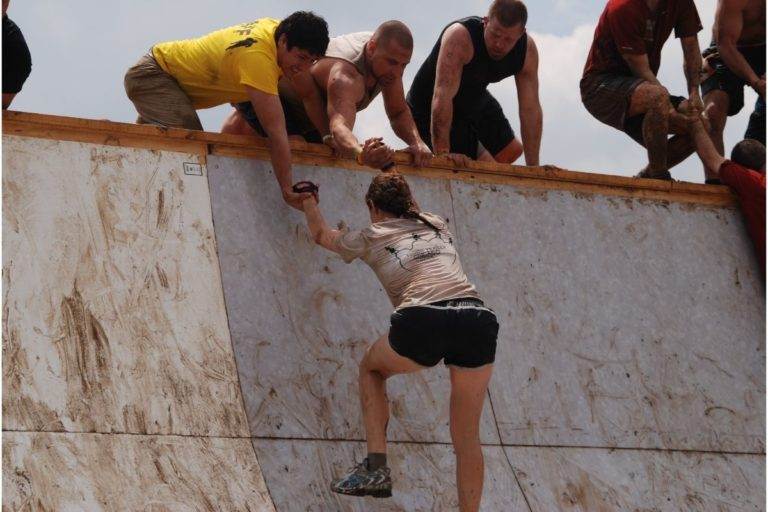The Hardest Marathons in the US! Are You Tough Enough for These Extreme Races?

Ultramarathon running is not for everyone. It requires extreme physical fitness, mental toughness, and endurance. You may find yourself among the elite few who run ultramarathons if you have the willpower.
Marathons have been around for over a hundred years. The length has varied over time. We now have a marathon distance of 26.2 miles, which we can all admit is tough.
However, some feel this challenge is not ENOUGH. That’s why there are even more brutal and more challenging tests of human capacity.
What Makes Ultramarathons More Extreme
First and foremost, an ultramarathon is a race longer than the traditional marathon length.
Typical distances are 50 km, 50 miles, 100 km, and 100 miles. There are also time-based races of 6, 12, and 24 hours and multi-day events (the winner is the runner who covers the most distance).
In our other piece of article, you can read more about the distances of ultra marathons.
Some courses travel through harsh terrains, such as steep mountainsides.
Participants must battle altitude, changes in weather, and potential falls. They must overcome fatigue, dehydration, heat exhaustion, muscle cramps, blisters, and hypothermia. To finish, they must prepare appropriately before each race.
So as you can see, we’d suggest starting with a more basic marathon if it’s your first time… The standard marathons around the US give you enough challenge if you are just beginning your marathon journey.
America’s vast expanses and diverse terrain make it the PERFECT location for extreme ultramarathons. I’m going to share with you the most difficult ultra marathons in the US so you can see how far you really can push yourself!
1. The Barkley Marathon
Barkley is an ultramarathon trail race held each year in Tennessee. Many have alluded to the idea that this may be the hardest marathon in the WORLD.
Barkley gets its incredibly tough reputation mainly from the disorganization of the event, as GPS systems are not permitted to be used by runners, and the loops themselves are vague and unstandardized alongside the lack of a start time.
It is thought this design is a strategic play to ensure the minimum amount of finishers possible. Sounds fun, right?
This extreme race takes place in Frozen Head State Park, Tennessee. If you’re able to complete the course, you have to run 5 loops of the course in 60 hours; one loop is roughly equivalent to the length of one marathon.
If completed, the loops include a total elevation loss and gain of around 120,000 feet.
Coupled with the rain, cold, and uncleared briars patch paths it’s no wonder that certain years don’t see any finishers.
Barkley has a long history. Since the first official Barkley race in 1986, only 15 individuals have been able to complete the marathon.
If you’d like to take part, the event runs in April.
We’d like to tell you how to sign up but that’s the first part of the challenge.
Although the race is popular, there is no official website. For entry, you must mail an application with a $1.60 non-refundable registration fee. Details about how and when, and where remain a secret.
2. Badwater 135
Another ultramarathon trying to claim the crown for the most extreme running event in the US is Badwater 135.
Starting out in Death Valley, California, Badwater is a 135-mile race that will take you across 3 different mountain ranges to Mt Whitney, California in 48 hours.
This includes a total of 14,600 feet of ascent and 6,100 feet of descent, so I’m sure this is easy in the July heat.
The race is featured in National Geographics ‘Top Ten Toughest Races’. It’s not surprising that you must be invited and accepted to join this race due to the sheer difficulty.
Be sure to check out their website to see if you have what it takes to qualify – these are usually entrants that have already completed a 100-mile marathon previously.
But if you do happen to finish this incredible personal achievement, you will receive one of the coveted Badwater 135 belt buckles.
The race is run in July every year.
3. Western States 100-Mile Endurance Run

The Western States run is considered to be the OLDEST of its kind.
If it wasn’t obvious from the name, this 100-mile ultra run follows the middle of the Western States Trail which runs from Salt Lake City to Sacramento.
Challenges in this event include the ascent from the starting point in Squaw Valley of 2,550 vertical feet in just the first 5 miles of the race.
Further elevations of 15,540 feet and a staggering 22,970 feet of descent are faced by runners after the first massive hurdle.
Due to the differences in elevation, runners can expect to face the blazing June heat as well as harsh snowy mountain conditions. A mixture of difficult and harsh terrain comes along with this.
For example, many mountainous stretches of the trail are usually only accessible by helicopter. Therefore dressing accordingly is a must.
In order to take part in the ultramarathon, you must have competed in one of a number of the qualifying races listed on their website to be up to the recognized standard, as the race has a 30-hour cut-off time.
This event takes place during the last weekend of June, every year.
4. Hardrock 100-Mile Endurance Run
The Hardock 100 takes place in the breathtaking Rocky Mountains, Colorado.
At just over 100 miles (100.5) runners can expect to race with an ascent and descent of around 34,000 feet across the course, this contributes to a total elevation change of 66,100 feet.
The nature of the terrain means participants must be able to handle the steep, difficult routes, many of which wind through out-of-use mining operations.
The highest point across the duration of the course is found at the summit of Handies Peak, part of the San Juan Mountains, and stands at around 14,048 feet.
Interestingly, rather than crossing a finish line, runners are expected to “kiss the Hardrock”, which is actually a picture of a ram’s head painted on an old block of stone mining debris.
Participants have 48 hours to reach the ram’s head, with the more advanced aiming for times of around 24 hours.
The race is held every year in July.
Final Thoughts
It’s easy to see why these events are referred to as ‘extreme’ marathons, they definitely aren’t for the fainthearted.
The majority of competitors are well-trained athletes with a dedicated team behind them to ensure their safety and hopefully, success.
Ranging from over 100 miles each, in no particular order, we’ve included some of America’s most extreme ultramarathons that test endurance, resilience, determination as well as physical capabilities.
However, we would say that if you prefer to know where you’re going it may be best to avoid The Barkley Marathon.






